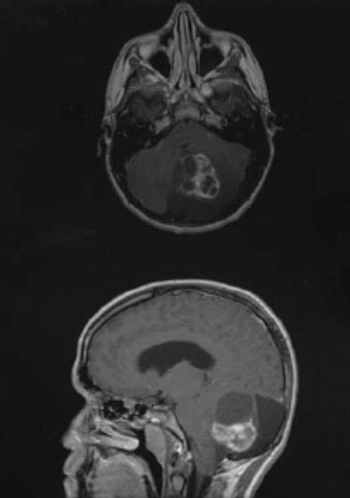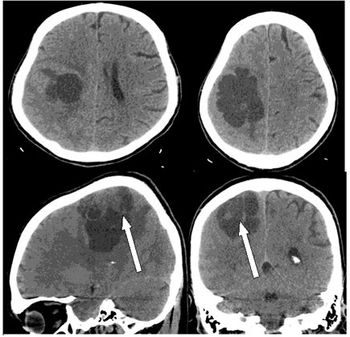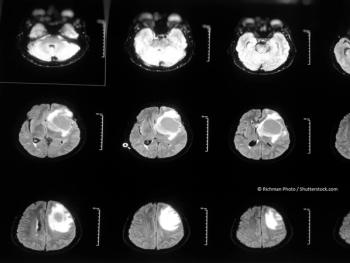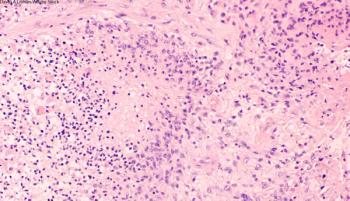
The results presented in this study indicated that neurosurgeons may need to change how they approach tumor removal and, when safe, include non-contrast-enhancing tumor during resection to achieve maximal resection.

Your AI-Trained Oncology Knowledge Connection!



The results presented in this study indicated that neurosurgeons may need to change how they approach tumor removal and, when safe, include non-contrast-enhancing tumor during resection to achieve maximal resection.

These results could present an opportunity to broaden inclusion criteria on clinical trials and intensify chemoradiotherapy treatments.

A perioperative study confirmed brain penetrance and robust biomarker suppression in patients with low-grade glioma with an IDH1 mutation.

Using RNA sequencing for individual pediatric cancer cases could more effectively target gene expression in tumors.

Researchers recently looked at differences in survival time between patients with grade II and grade III spinal meningioma.

There could be a new way to diagnose brain tumors earlier.

Investigators assessed effects of TIB on cell number, migration, invasion, estrogen, and progesterone receptor activity and content.

A new study offers hope in predicting glioblastoma responses to chemotherapy, radiation, and combination therapy.

Cancer Network spoke with Rimas V. Lukas, MD, of Northwestern University Feinberg School of Medicine, about the combination of controlled interleukin-12 with a PD-1 inhibitor in recurrent glioblastoma.

Cancer Network spoke with Dr. Shulin Li about his team’s research on the role of the FGL2 protein in glioblastoma immune evasion and tumor progression.

This review focuses on clinical developments and management of newly diagnosed glioblastoma, and includes a discussion about the incorporation of molecular features into the classification of this disease.

Dr. James Perry speaks with Cancer Network about glioma therapy options and the future of brain cancer treatment.

New research published in Neuro-Oncology examines the controversial link between intracranial volume and high-grade glioma.

MRI-guided laser interstitial thermal therapy appears to be safe and effective for glioblastomas and may add an average of 2 months to life expectancy.

Researchers report that the same driving force that makes Zika so detrimental to unborn babies gives it promise as a cancer treatment.

A noncontrolled phase I study in recurrent metastatic glioblastoma showed 3-year survival was five times higher in patients treated with intratumoral PVSRIPO.

These are the first data to highlight the prognostic value of MGMT methylation beyond the IDH1/2 mutation status test currently used to help predict glioma patient survival outcomes.

Antibody-mediated, immunotherapeutic strategies targeting survivin, a key cancer-related protein, may offer benefit in a variety of cancers.

A USCF team has uncovered molecular insights into meningioma biology that could lead to new, less toxic treatment approaches.

In Part 2 of this two-part series, we review the clinical evidence in support of combining immunotherapy with stereotactic radiosurgery for the treatment of brain metastases; examine controversies regarding radiation dose and fractionation, as well as temporal sequencing of multimodality treatment; and discuss future directions in combined therapy.

In this review, we highlight preclinical and clinical data to support the rationale for combination of stereotactic radiosurgery with immunotherapy for the treatment of brain metastases; describe some areas of controversy, especially with regard to radiation fractionation and the timing of combination therapy; and discuss ongoing research into multimodality treatment of CNS tumors.

In Part 2 of this review article, we discuss the management of primary CNS lymphoma, focusing in particular on systemic therapies and radiation, as well as provide clinicians with a comprehensive overview by covering the key investigations that have brought us to our current state of knowledge, and studies that may guide future interventions.

Here, in Part 1, we will provide an overview of the epidemiology of primary CNS lymphoma, followed by a discussion of the diagnostic and staging evaluation. We will also review the current prognostication systems for primary CNS lymphoma.

The addition of tumor-treating fields to maintenance temozolomide chemotherapy significantly delayed progression and improved overall survival in patients with glioblastoma who had received standard radiochemotherapy compared with maintenance temozolomide alone.

The addition of bevacizumab to lomustine for patients with progressive glioblastoma did not result in a significant improvement in overall survival.